Using Deep 1D Convolutional Grated Recurrent Unit Neural Network to Optimize Quantum Molecular Properties and Predict Intramolecular Coupling Constants of Molecules of Potential Health Medications and Other Generic Molecules
Abstract
1. Introduction
- This study proposed a one-dimensional deep convolutional gated recurrent neural network (1D-CNN-GRU) for improving the properties of chemical compounds in possible liquid drugs/medications.
- A comparison of the performance of molecular property systems based on a recurrent neural network, long short-term memory (LSTM), gated recurrent unit (GRU), one-dimensional convolutional neural network (1DCNN), and the proposed one-dimensional convolutional gated recurrent unit neural network (1D-CNN-GRU) was conducted.
- A 1D-CNN-GRU optimization algorithm that can accurately predict the molecular properties of molecules is presented.
- The efficacy of the suggested model was assessed using various performance criteria.
2. Related Work
3. Materials and Methods
3.1. Molecular Property Dataset
3.2. Data Normalization
- Data normalization aids in the improvement of data speed, accuracy, and efficiency, as well as the removal of undesired outliers.
- It aids in the reduction of data alteration issues.
- Data normalization reduces duplication, by ensuring that only relevant data is stored in each table.
3.3. The Proposed Model
3.4. 1D-CNN-GRU Architecture
3.5. Optimization Algorithm
4. Results and Discussion
5. Conclusions
Author Contributions
Funding
Institutional Review Board Statement
Informed Consent Statement
Data Availability Statement
Acknowledgments
Conflicts of Interest
References
- Becke, A. The Quantum Theory of Atoms in Molecules: From Solid State to DNA and Drug Design; John Wiley & Sons: Hoboken, NJ, USA, 2007. [Google Scholar]
- Oglic, D.; Garnett, R.; Gärtner, T. Active search in intensionally specified structured spaces. In Proceedings of the AAAI Conference on Artificial Intelligence, San Francisco, CA, USA, 4–9 February 2017; Volume 31. [Google Scholar]
- Thouless, D.J. The Quantum Mechanics of Many-Body Systems; Courier Corporation: Washington, DC, USA, 2014. [Google Scholar]
- Kohn, W.; Sham, L.J. Self-consistent equations including exchange and correlation effects. Phys. Rev. 1965, 140, A1133. [Google Scholar] [CrossRef]
- Gilmer, J.; Schoenholz, S.S.; Riley, P.F.; Vinyals, O.; Dahl, G.E. Neural message passing for quantum chemistry. In International Conference on Machine Learning; PMLR: New York City, NY, USA, 2017; pp. 1263–1272. [Google Scholar]
- Rupp, M. Machine learning for quantum mechanics in a nutshell. Int. J. Quantum Chem. 2015, 115, 1058–1073. [Google Scholar] [CrossRef]
- Zaspel, P.; Huang, B.; Harbrecht, H.; von Lilienfeld, O.A. Boosting quantum machine learning models with a multilevel combination technique: Pople diagrams revisited. J. Chem. Theory Comput. 2018, 15, 1546–1559. [Google Scholar] [CrossRef] [PubMed]
- Ramakrishnan, R.; Dral, P.O.; Rupp, M.; von Lilienfeld, O.A. Big data meets quantum chemistry approximations: The Δ-machine learning approach. J. Chem. Theory Comput. 2015, 11, 2087–2096. [Google Scholar] [CrossRef]
- Smith, J.S.; Nebgen, B.T.; Zubatyuk, R.; Lubbers, N.; Devereux, C.; Barros, K.; Tretiak, S.; Isayev, O.; Roitberg, A. Outsmarting Quantum Chemistry through Transfer Learning. 2019, pp. 1–32. Available online: www.chemrxiv.org (accessed on 10 March 2022).
- Smith, J.S.; Isayev, O.; Roitberg, A.E. ANI-1: An extensible neural network potential with DFT accuracy at force field computational cost. Chem. Sci. 2017, 8, 3192–3203. [Google Scholar] [CrossRef]
- Unke, O.T.; Meuwly, M. A reactive, scalable, and transferable model for molecular energies from a neural network approach based on local information. J. Chem. Phys. 2018, 148, 241708. [Google Scholar] [CrossRef]
- Zubatyuk, R.; Smith, J.S.; Leszczynski, J.; Isayev, O. Accurate and transferable multitask prediction of chemical properties with an atoms-in-molecules neural network. Sci. Adv. 2019, 5, eaav6490. [Google Scholar] [CrossRef]
- Faber, F.A.; Hutchison, L.; Huang, B.; Gilmer, J.; Schoenholz, S.S.; Dahl, G.E.; Vinyals, O.; Kearnes, S.; Riley, P.F.; von Lilienfeld, O.A. Prediction errors of molecular machine learning models lower than hybrid DFT error. J. Chem. Theory Comput. 2017, 13, 5255–5264. [Google Scholar] [CrossRef]
- Schütt, K.T.; Sauceda, H.E.; Kindermans, P.J.; Tkatchenko, A.; Müller, K.R. Schnet–A deep learning architecture for molecules and materials. J. Chem. Phys. 2018, 148, 241722. [Google Scholar] [CrossRef]
- Karpathy, A.; Toderici, G.; Shetty, S.; Leung, T.; Sukthankar, R.; Fei-Fei, L. Large-scale video classification with convolutional neural networks. In Proceedings of the IEEE Conference on Computer Vision and Pattern Recognition, Columbus, OH, USA, 23–28 June 2014; pp. 1725–1732. [Google Scholar]
- He, K.; Zhang, X.; Ren, S.; Sun, J. Deep residual learning for image recognition. In Proceedings of the IEEE Conference on Computer Vision and Pattern Recognition, Las Vegas, NV, USA, 27–30 June 2016; pp. 770–778. [Google Scholar]
- Huang, B.; Von Lilienfeld, O.A. Communication: Understanding molecular representations in machine learning: The role of uniqueness and target similarity. J. Chem. Phys. 2016, 145, 161102. [Google Scholar] [CrossRef]
- Zhu, H.; Liu, Q.; Yuan, N.J.; Qin, C.; Li, J.; Zhang, K.; Zhou, G.; Wei, F.; Xu, Y.; Chen, E. Xiaoice band: A melody and arrangement generation framework for pop music. In Proceedings of the 24th ACM SIGKDD International Conference on Knowledge Discovery & Data Mining, London, UK, 19–23 August 2018; pp. 2837–2846. [Google Scholar]
- Liu, Q.; Huang, Z.; Huang, Z.; Liu, C.; Chen, E.; Su, Y.; Hu, G. Finding similar exercises in online education systems. In Proceedings of the 24th ACM SIGKDD International Conference on Knowledge Discovery & Data Mining, London, UK, 19–23 August 2018; pp. 1821–1830. [Google Scholar]
- Kollman, P. Theory of complex molecular interactions: Computer graphics, distance geometry, molecular mechanics, and quantum mechanics. Acc. Chem. Res. 1985, 18, 105–111. [Google Scholar] [CrossRef]
- McDonagh, J.L.; Silva, A.; Vincent, M.A.; Popelier, P.L.A. Machine learning of dynamic electron correlation energies from topological atoms. J. Chem. Theory Comput. 2017, 14, 216–224. [Google Scholar] [CrossRef]
- Huang, B.; von Lilienfeld, O.A. Ab initio machine learning in chemical compound space. Chem. Rev. 2021, 121, 10001–10036. [Google Scholar] [CrossRef]
- Montavon, G.; Hansen, K.; Fazli, S.; Rupp, M.; Biegler, F.; Ziehe, A.; Tkatchenko, A.; Lilienfeld, A.; Müller, K.R. Learning invariant representations of molecules for atomization energy prediction. Adv. Neural Inf. Process. Syst. 2012, 25, 440–448. [Google Scholar]
- Goh, G.B.; Siegel, C.; Vishnu, A.; Hodas, N. Using rule-based labels for weak supervised learning: A ChemNet for transferable chemical property prediction. In Proceedings of the 24th ACM SIGKDD International Conference on Knowledge Discovery & Data Mining, London, UK, 19–23 August 2018; pp. 302–310. [Google Scholar]
- Sun, M.; Zhao, S.; Gilvary, C.; Elemento, O.; Zhou, J.; Wang, F. Graph convolutional networks for computational drug development and discovery. Brief. Bioinform. 2019, 21, 919–935. [Google Scholar] [CrossRef]
- Wang, J.; Hou, T. Application of molecular dynamics simulations in molecular property prediction II: Diffusion coefficient. J. Comput. Chem. 2011, 32, 3505–3519. [Google Scholar] [CrossRef]
- Predicting Molecular Properties. Can You Measure the Magnetic Interactions between a Pair of Atoms? Kaggle. 2019. Available online: https://www.kaggle.com/c/champs-scalar-coupling (accessed on 20 March 2022).
- Singh, D.; Singh, B. Investigating the impact of data normalization on classification performance. Appl. Soft Comput. 2020, 97, 105524. [Google Scholar] [CrossRef]
- Oyewola, D.O.; Dada, E.G.; Misra, S.; Damaševičius, R. A novel data augmentation convolutional neural network for detecting malaria parasite in blood smear images. Appl. Artif. Intell. 2022, 36, 1–22. [Google Scholar] [CrossRef]
- Oyewola, D.O.; Dada, E.G.G.; Olaoluwa, O.E.; Al-Mustapha, K. Predicting Nigerian stock returns using technical analysis and machine learning. Eur. J. Electr. Eng. Comput. Sci. 2019, 3. [Google Scholar] [CrossRef][Green Version]
- Yao, D.; Li, B.; Liu, H.; Yang, J.; Jia, L. Remaining useful life prediction of roller bearings based on improved 1D-CNN and simple recurrent unit. Measurement 2021, 175, 109166. [Google Scholar] [CrossRef]
- Wei, M.; Gu, H.; Ye, M.; Wang, Q.; Xu, X.; Wu, C. Remaining useful life prediction of lithium-ion batteries based on Monte Carlo Dropout and gated recurrent unit. Energy Rep. 2021, 7, 2862–2871. [Google Scholar] [CrossRef]
- Arouri, Y.; Sayyafzadeh, M. An adaptive moment estimation framework for well placement optimization. Comput. Geosci. 2022, 1–17. [Google Scholar] [CrossRef]
- Xue, Y.; Wang, Y.; Liang, J. A self-adaptive gradient descent search algorithm for fully-connected neural networks. Neurocomputing 2022, 478, 70–80. [Google Scholar] [CrossRef]
- Nguyen, L.C.; Nguyen-Xuan, H. Deep learning for computational structural optimization. ISA Trans. 2020, 103, 177–191. [Google Scholar] [CrossRef]
- Oyewola, D.O.; Ibrahim, A.; Kwanamu, J.; Dada, E.G. A new auditory algorithm in stock market prediction on oil and gas sector in Nigerian stock exchange. Soft Comput. Lett. 2021, 3, 100013. [Google Scholar] [CrossRef]
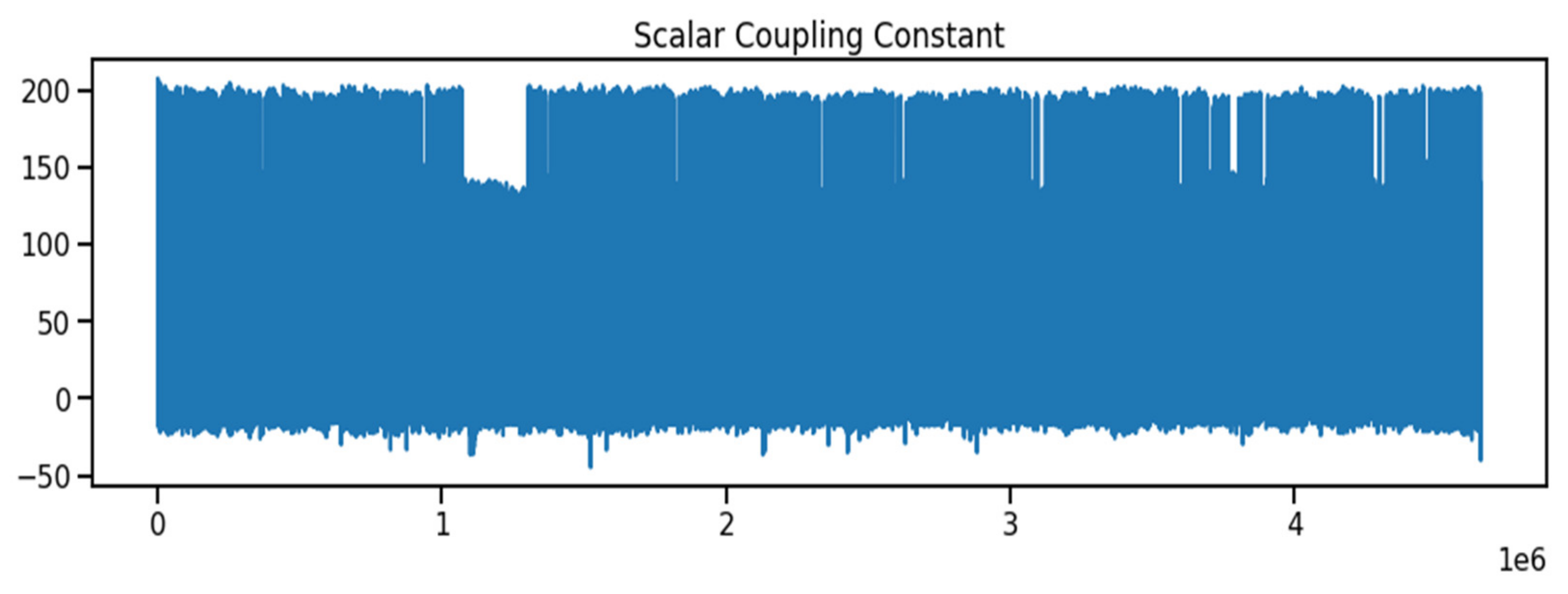
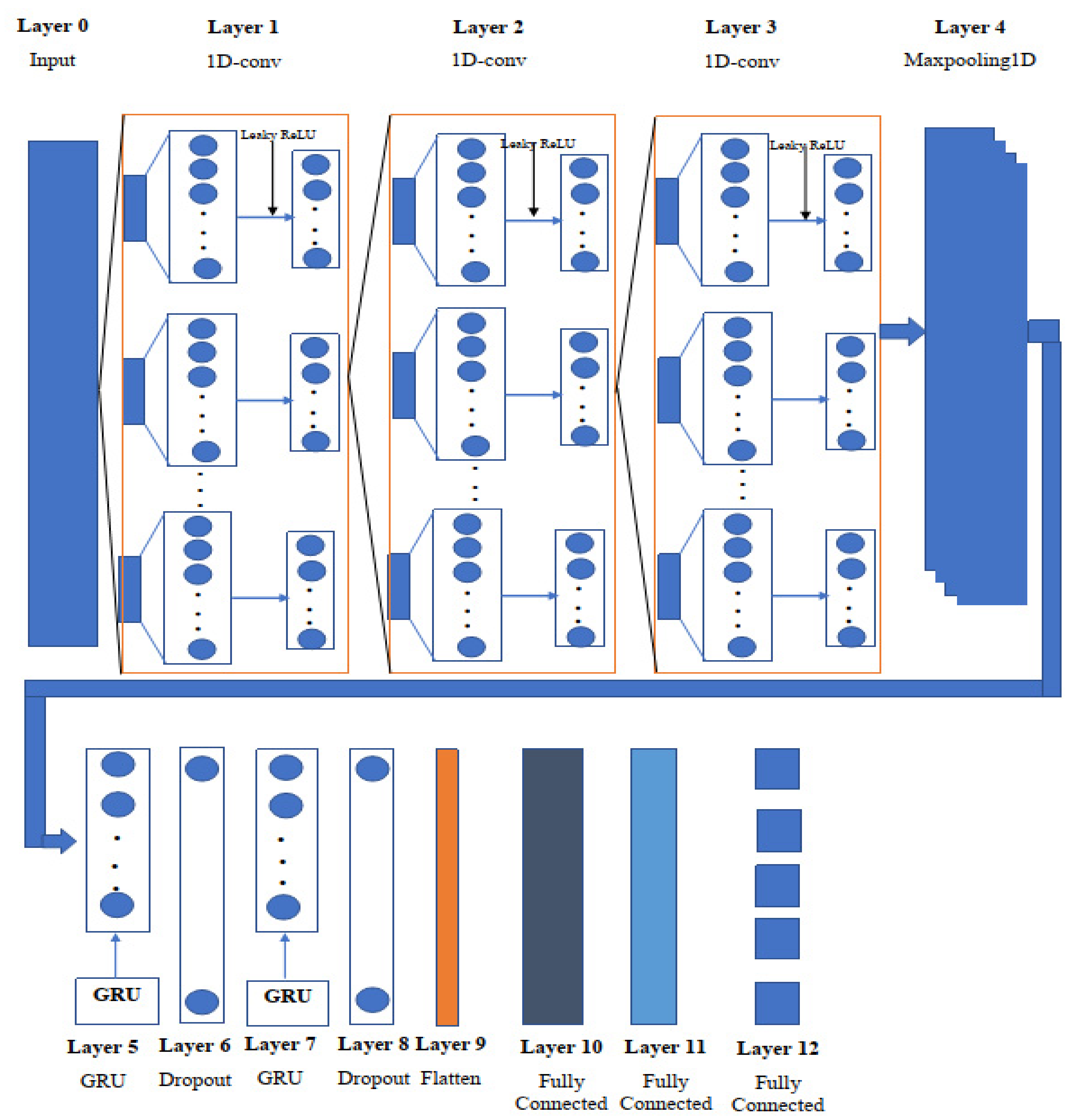
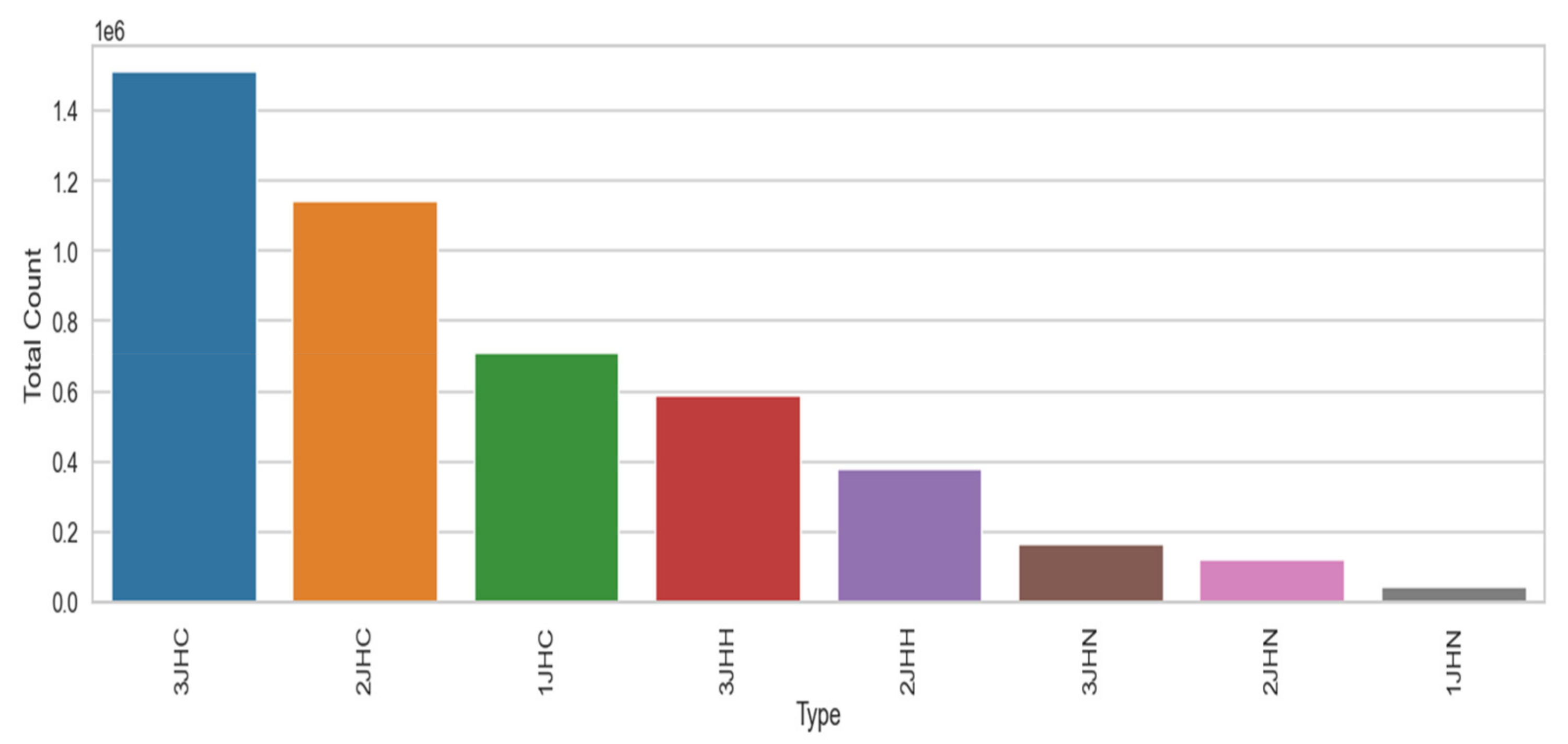
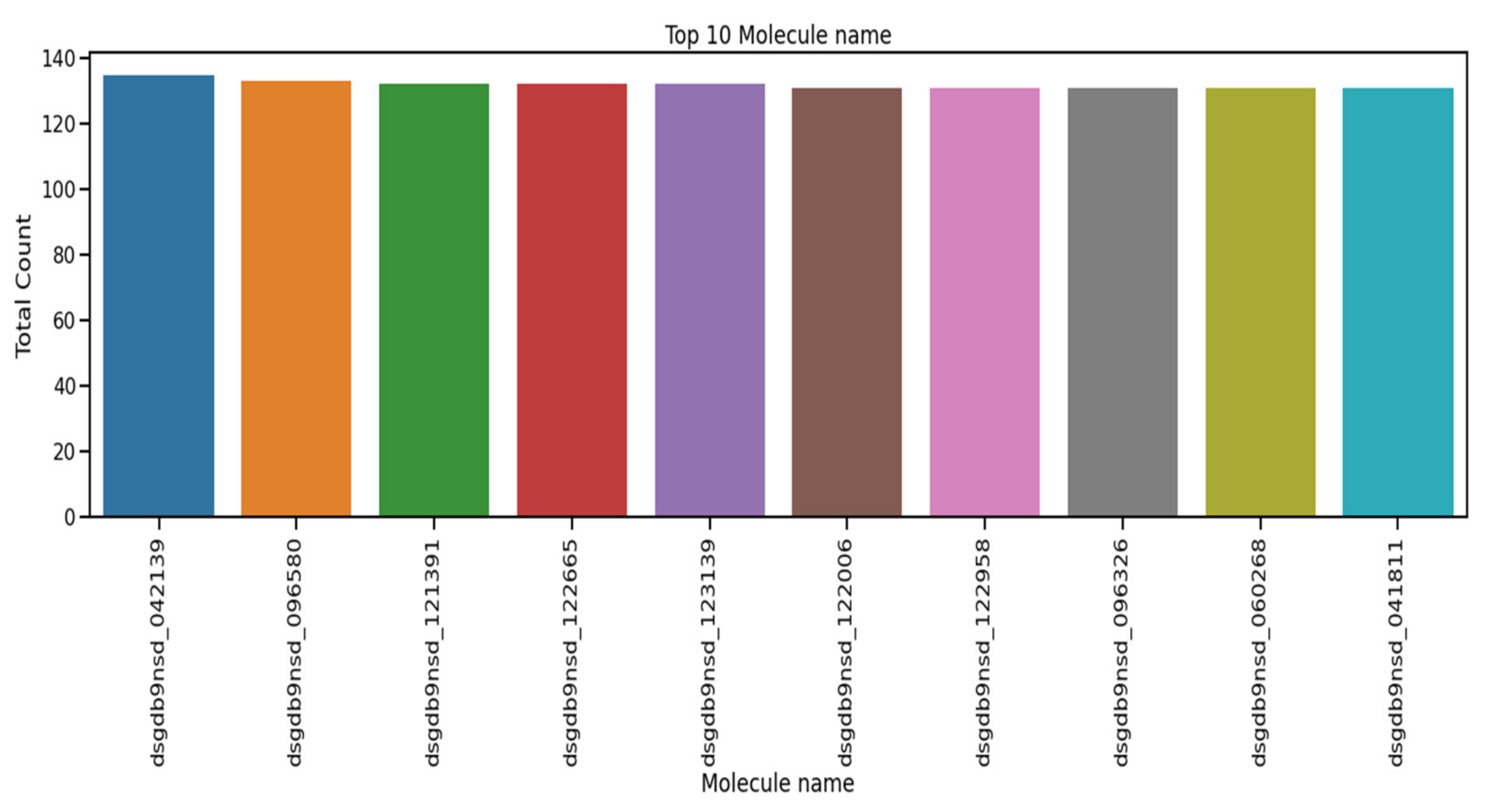
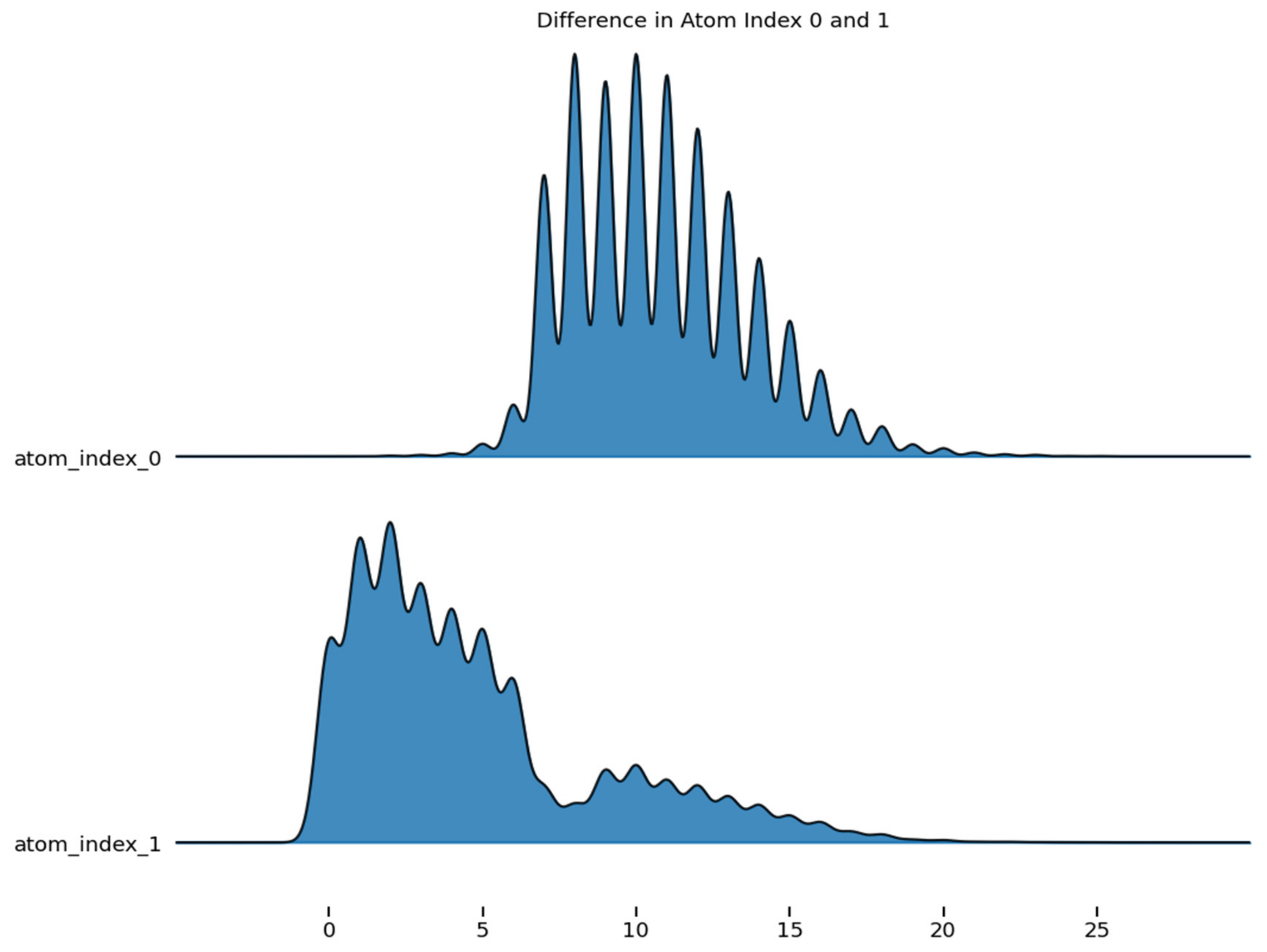

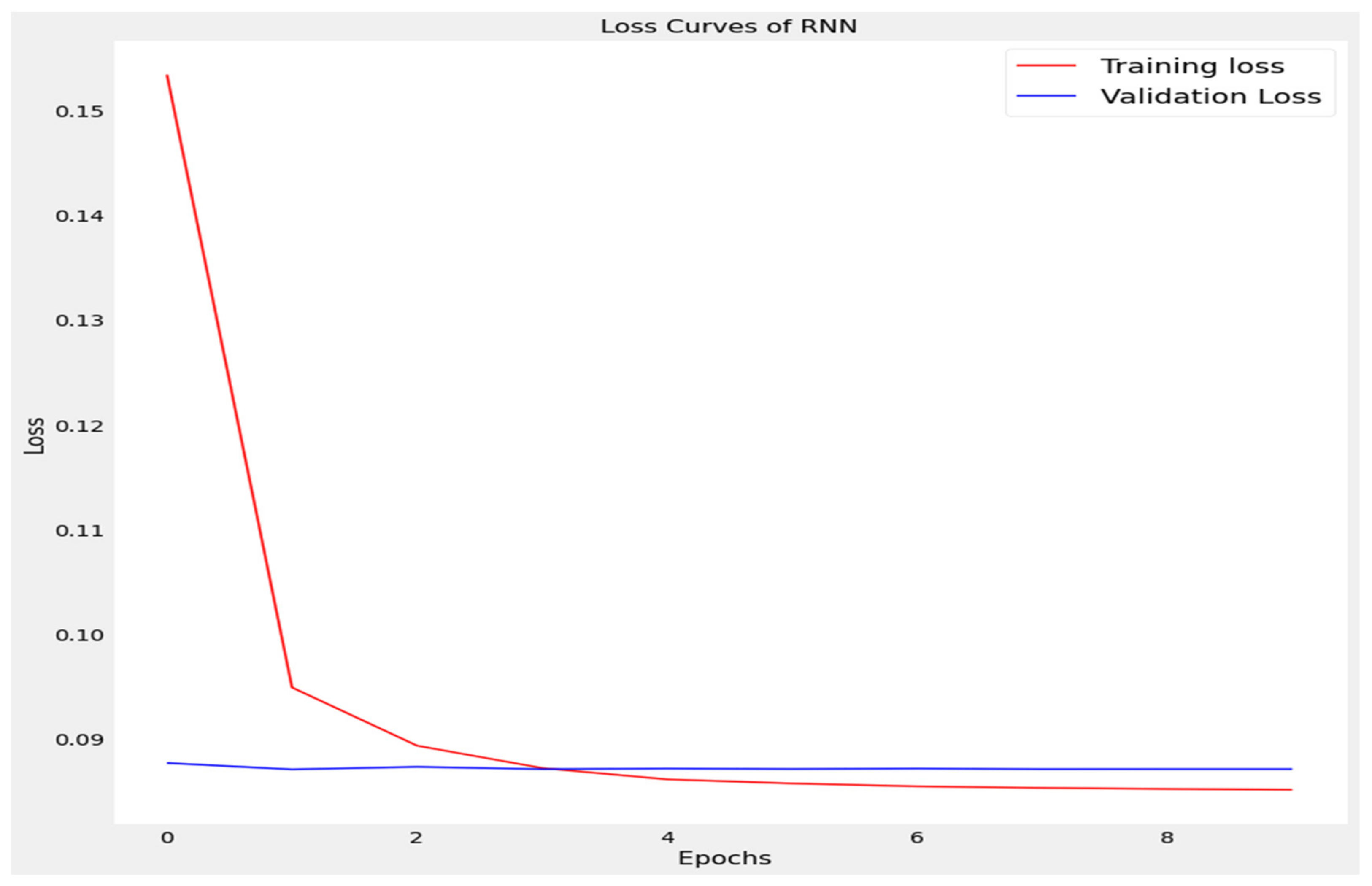
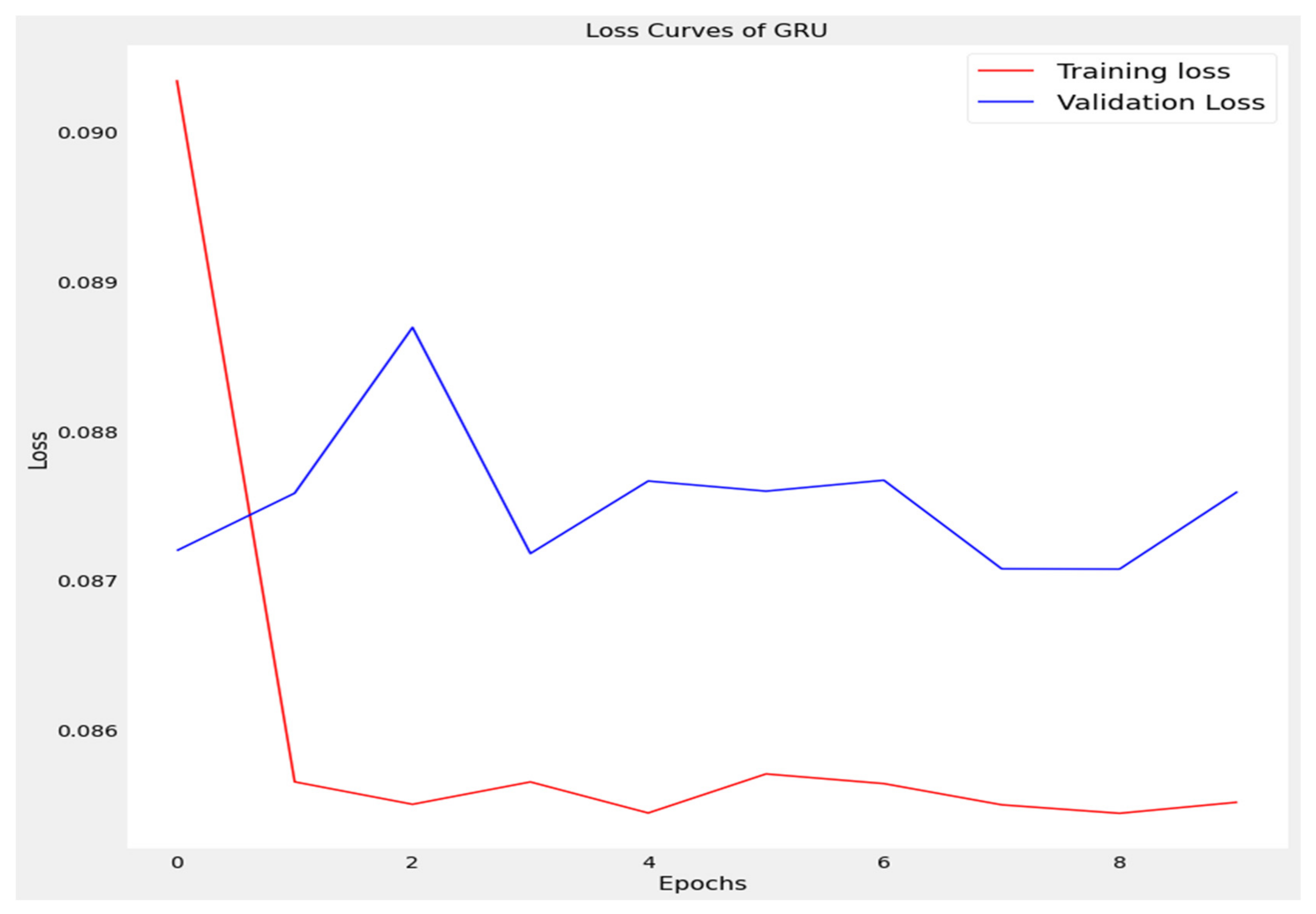
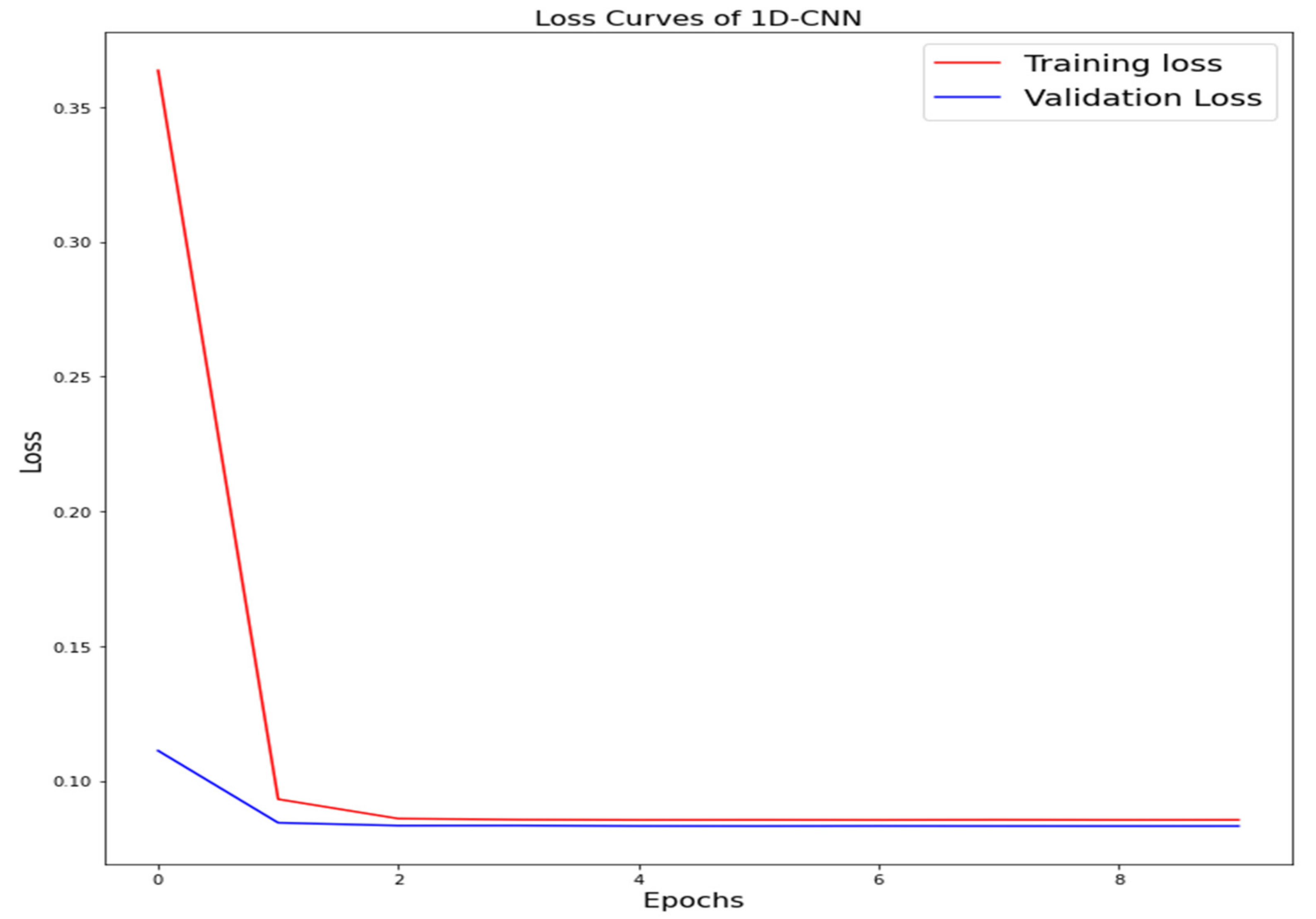
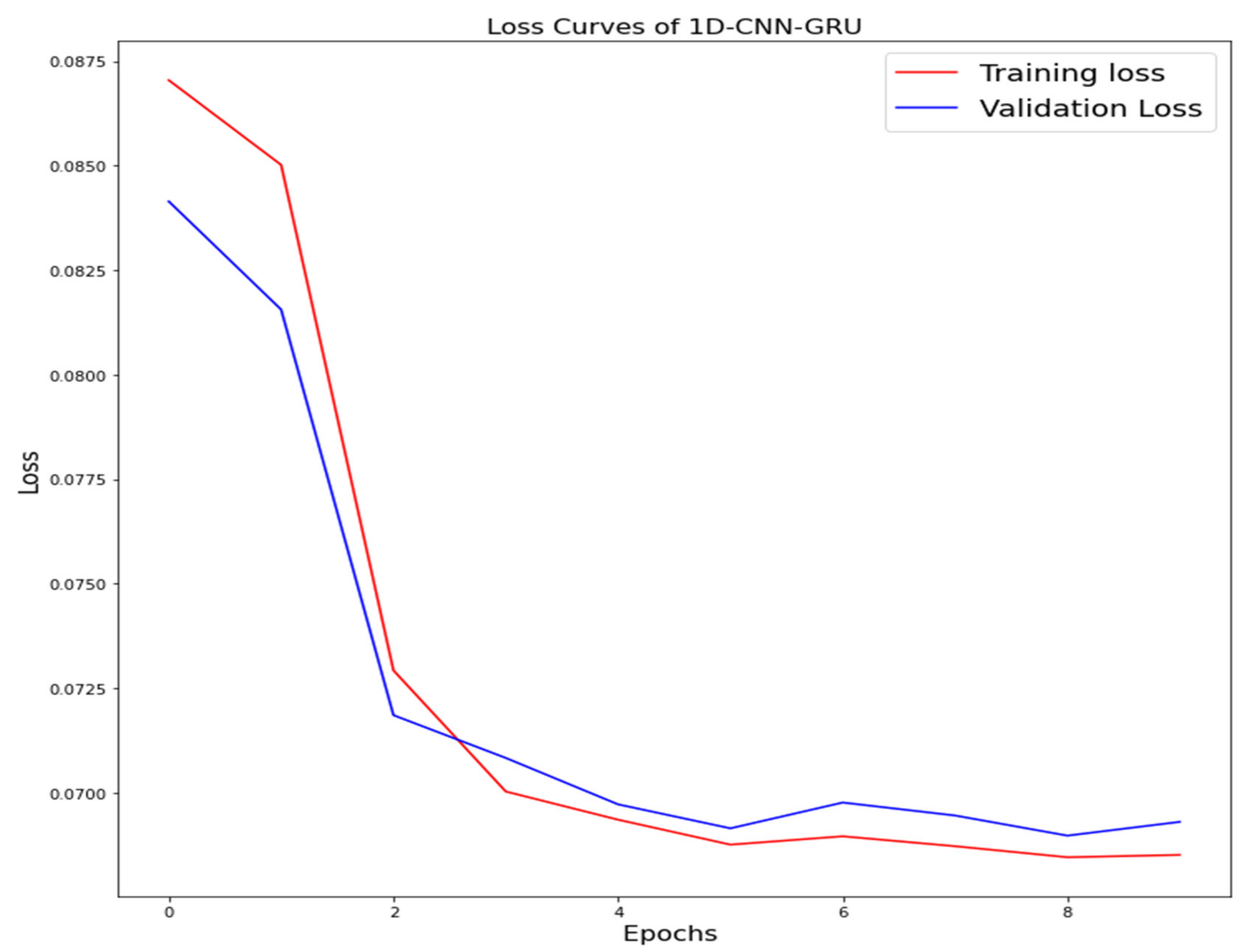
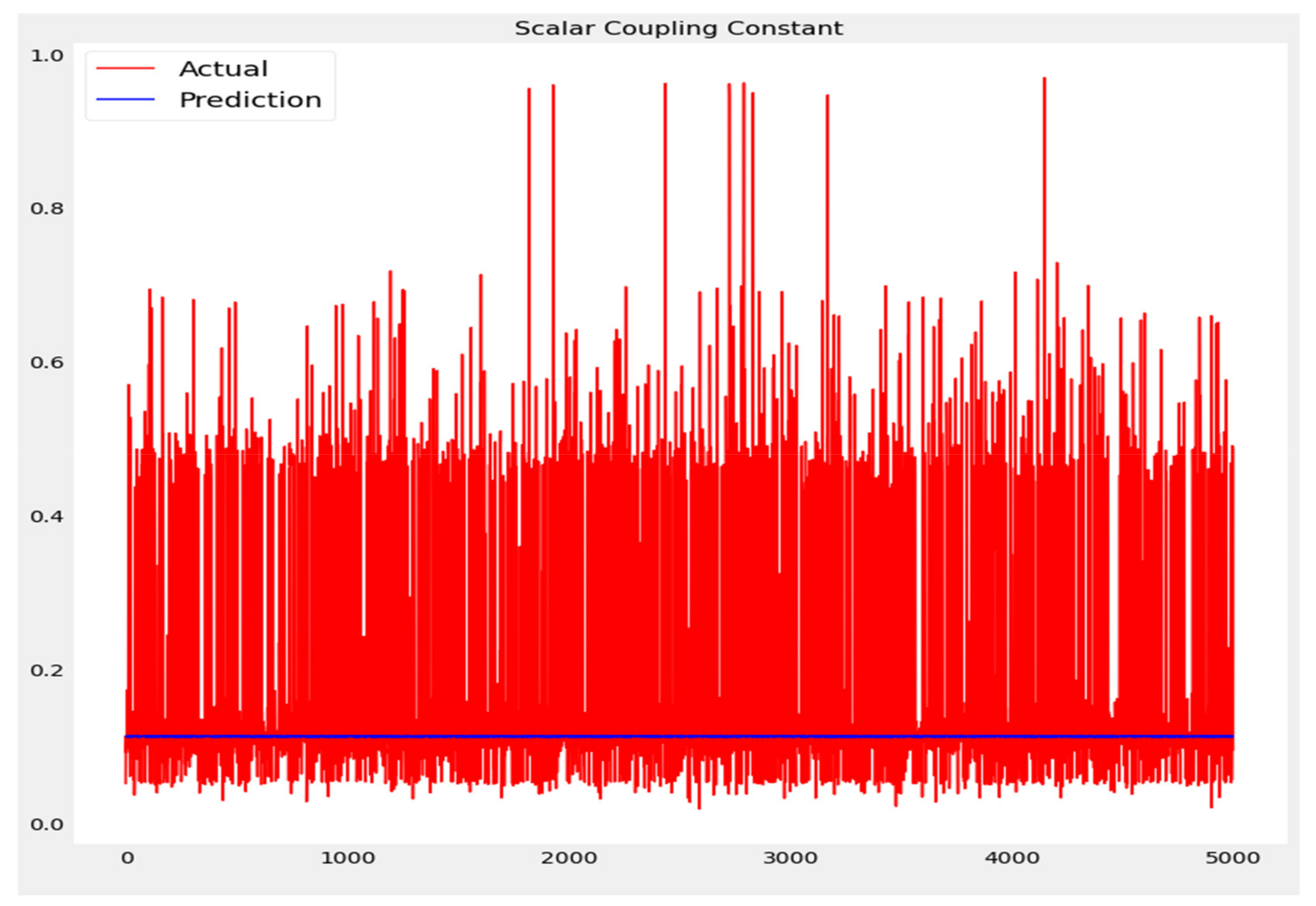

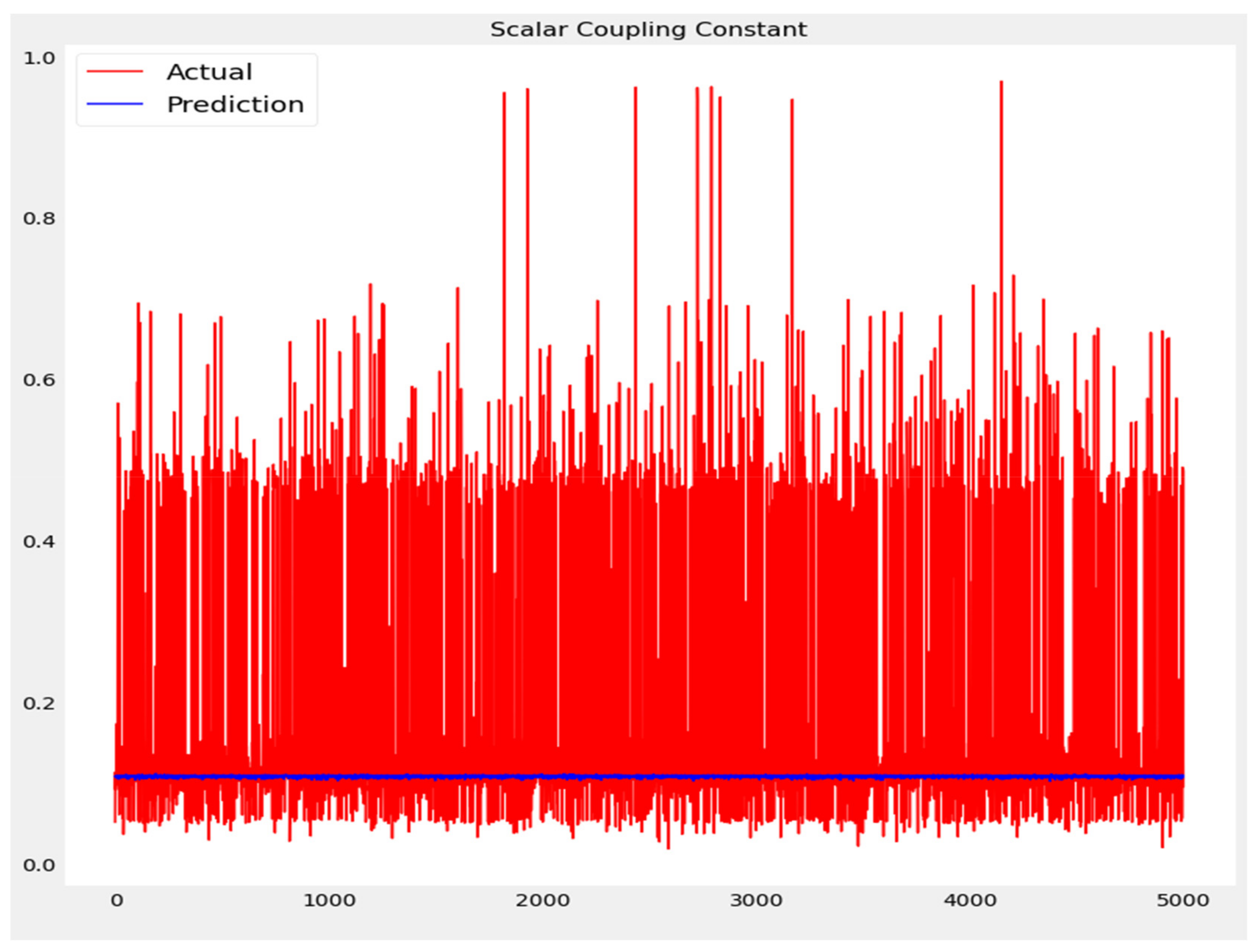
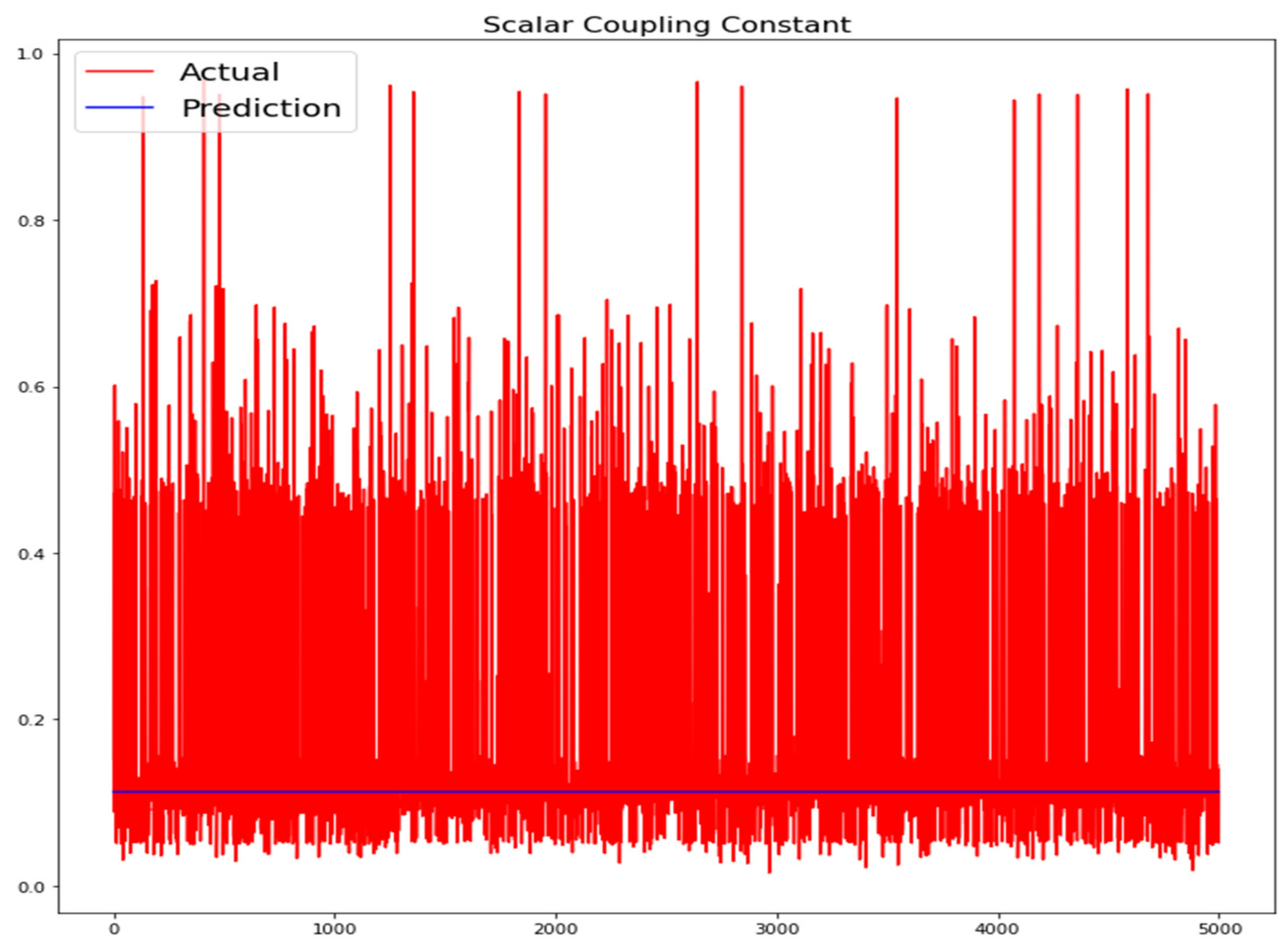

| Dataset | Types | Explanation |
|---|---|---|
| Id | Numerical(Integer) | Identity of the molecular property |
| Molecule_name | Text(Object) | The name of the molecule where the coupling constant originates |
| Atom_index_0 | Numerical (Integer) | The atom indices of the atom-pair creating the coupling |
| Atom_index_1 | Numerical (Integer) | The atom indices of the atom-pair creating the coupling |
| Type | Text (Object) | It indicates different types of coupling |
| Scalar_coupling_constant | Numerical (Float) | Scalar coupling is the isotropic part (independent on the molecular orientation) of the J coupling |
| Layer | Type | Units | Kernel | Filter | Other Parameters |
|---|---|---|---|---|---|
| 1 | Convolution1D | 3 | 128 | Padding = same, activation = LeakyReLU, alpha = 0.001 | |
| 2 | Convolution1D | 3 | 64 | Padding = same, activation = LeakyReLU, alpha = 0.001 | |
| 3 | Convolution1D | 3 | 32 | Padding = same, activation = LeakyReLU, alpha = 0.001 | |
| 4 | MaxPooling1D | Pool size = 3, strides-2, Padding = same | |||
| 5 | GRU | 128 | Activation = LeakyReLU, alpha = 0.001,return sequence = True, activity regularizer = l2(0.001) | ||
| 6 | Dropout | Rate = 0.2 | |||
| 7 | GRU | 64 | Activation = LeakyReLU, alpha = 0.001, kernel initializer = random uniform, seed = 42, activity regularizer = l2(0.001) | ||
| 8 | Dropout | Rate = 0.2 | |||
| 9 | Flatten | ||||
| 10 | Dense | 512 | Activation = LeakyReLU, alpha = 0.001 | ||
| 11 | Dense | 256 | Activation = LeakyReLU, alpha = 0.001 | ||
| 12 | Dense | 1 | Activation = Linear |
| Dataset | Mean | Std | Min | 25% | 50% | 75% | Max | Total |
|---|---|---|---|---|---|---|---|---|
| Id | 2,329,537.5 | 1,344,959.53 | 0.00 | 1,164,768.75 | 2,329,537.50 | 3,494,306.25 | 4,659,075.00 | 4,659,076.00 |
| Atom_index_0 | 13.36 | 3.27 | 1.00 | 11.00 | 13.00 | 16.00 | 28.00 | 4,659,076.00 |
| Atom_index_1 | 5.88 | 4.99 | 0.00 | 2.00 | 5.00 | 8.00 | 28.00 | 4,659,076.00 |
| Sscalar_coupling_constant | 15.91 | 34.93 | −44.76 | −0.26 | 2.28 | 7.39 | 207.71 | 4,659,076.00 |
| Metrics | LSTM | RNN | GRU | 1D-CNN | 1D-CNN-GRU |
|---|---|---|---|---|---|
| MSE | 0.0287 | 0.0285 | 0.0292 | 0.0282 | 0.0230 |
| RMSE | 0.1696 | 0.1670 | 0.1709 | 0.1681 | 0.1517 |
| MAE | 0.0862 | 0.0851 | 0.0863 | 0.0843 | 0.0693 |
Publisher’s Note: MDPI stays neutral with regard to jurisdictional claims in published maps and institutional affiliations. |
© 2022 by the authors. Licensee MDPI, Basel, Switzerland. This article is an open access article distributed under the terms and conditions of the Creative Commons Attribution (CC BY) license (https://creativecommons.org/licenses/by/4.0/).
Share and Cite
Oyewola, D.O.; Dada, E.G.; Emebo, O.; Oluwagbemi, O.O. Using Deep 1D Convolutional Grated Recurrent Unit Neural Network to Optimize Quantum Molecular Properties and Predict Intramolecular Coupling Constants of Molecules of Potential Health Medications and Other Generic Molecules. Appl. Sci. 2022, 12, 7228. https://doi.org/10.3390/app12147228
Oyewola DO, Dada EG, Emebo O, Oluwagbemi OO. Using Deep 1D Convolutional Grated Recurrent Unit Neural Network to Optimize Quantum Molecular Properties and Predict Intramolecular Coupling Constants of Molecules of Potential Health Medications and Other Generic Molecules. Applied Sciences. 2022; 12(14):7228. https://doi.org/10.3390/app12147228
Chicago/Turabian StyleOyewola, David Opeoluwa, Emmanuel Gbenga Dada, Onyeka Emebo, and Olugbenga Oluseun Oluwagbemi. 2022. "Using Deep 1D Convolutional Grated Recurrent Unit Neural Network to Optimize Quantum Molecular Properties and Predict Intramolecular Coupling Constants of Molecules of Potential Health Medications and Other Generic Molecules" Applied Sciences 12, no. 14: 7228. https://doi.org/10.3390/app12147228
APA StyleOyewola, D. O., Dada, E. G., Emebo, O., & Oluwagbemi, O. O. (2022). Using Deep 1D Convolutional Grated Recurrent Unit Neural Network to Optimize Quantum Molecular Properties and Predict Intramolecular Coupling Constants of Molecules of Potential Health Medications and Other Generic Molecules. Applied Sciences, 12(14), 7228. https://doi.org/10.3390/app12147228






